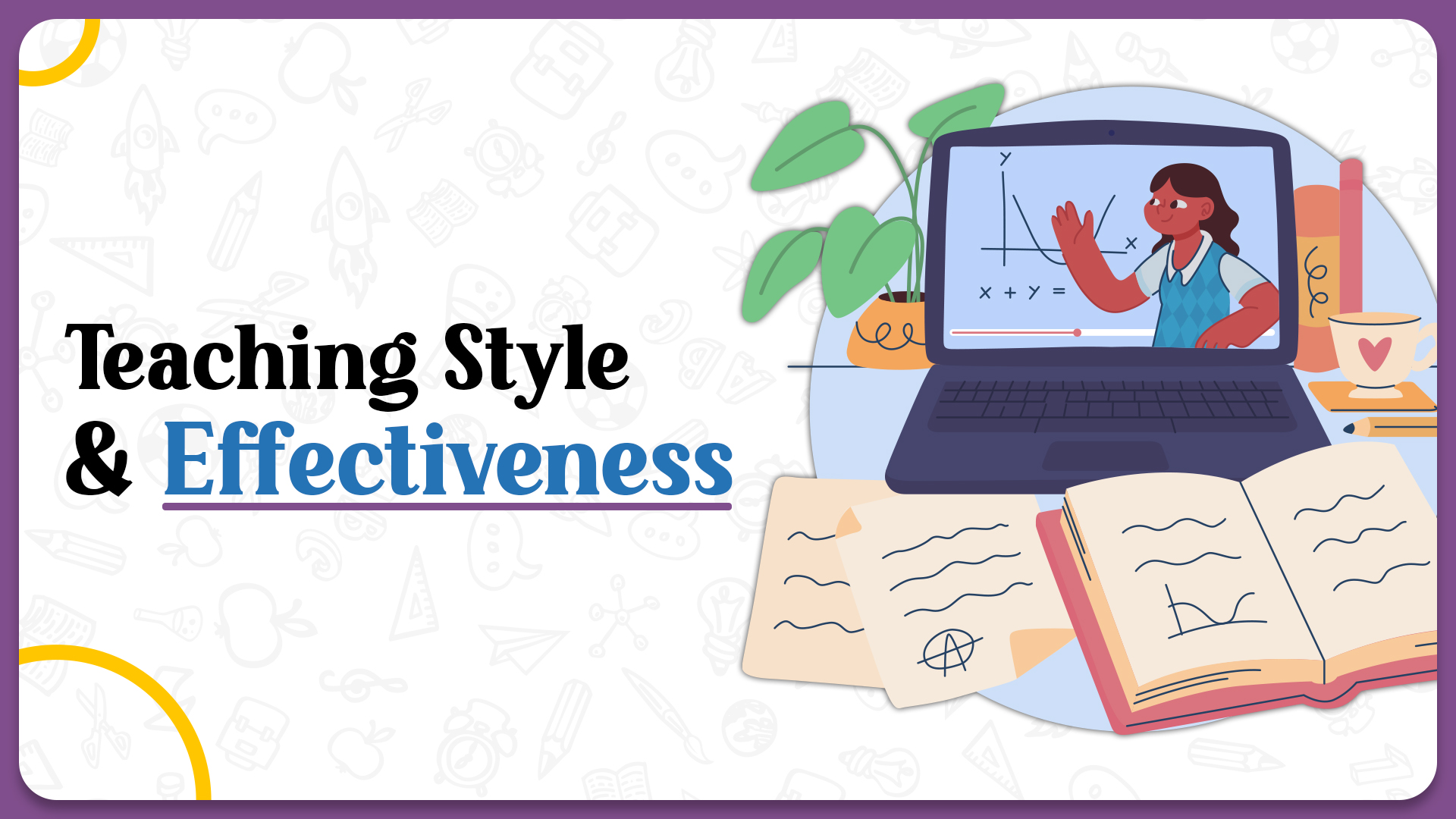How to Evaluate a Tutor's Teaching Style and Effectiveness?




Selecting the right tutor is crucial, whether for one-to-one tuition, private tutors, or lessons through an online tutoring platform. A tutor can play a transformative role in a student’s academic journey, influencing not just grades but also confidence and long-term aspirations. Evaluating a tutor's teaching style and effectiveness ensures that the investment of time, effort, and resources yields the desired results.
In this blog, we will explore teaching styles, evaluation methods, effectiveness indicators, and actionable strategies for assessing performance.
A tutor’s teaching style is the unique way they deliver content and engage with students. It encompasses techniques, communication methods, and the use of resources. Recognizing and aligning teaching styles with student needs is essential for effective learning.
Five Common Teaching Styles:
Understanding a student’s preferred learning style is crucial for tailoring teaching methods to maximize effectiveness. Here’s how to evaluate learning styles:
Distribute tools like the VARK (Visual, Auditory, Reading/Writing, Kinesthetic) questionnaire to identify how a student absorbs information best.
Pay attention to how students respond during lessons.
Conduct simple diagnostic activities to observe how students process information.
Ask students directly what they feel helps them learn best.
Over time, analyze the patterns in how a student approaches different types of tasks.
By using these methods to evaluate learning styles, tutors can customize their teaching strategies to match students' natural inclinations, enhancing engagement and retention.
Finding the right tutor for your child begins with understanding their teaching style and ensuring it aligns with your child's learning needs. Here are the steps to effectively evaluate a tutor's teaching style before committing:
A trial session is a powerful way to observe the tutor in action. It allows you to assess how they engage with the student, structure the lesson, and explain concepts. Watch for indicators such as clarity, enthusiasm, and adaptability during this session.
Pay close attention to how the tutor communicates and builds rapport with the student. A good tutor will:
Reviews from other parents and students provide valuable insights into the tutor’s effectiveness. Look for consistent positive feedback on attributes such as teaching style, communication skills, and ability to achieve results.
Engage in an open conversation with the tutor to understand their methods. Ask questions like:
Their answers will give you a clear idea of whether their approach aligns with your child’s needs.
An adaptable tutor can modify their teaching style based on feedback and the student’s progress. Discuss scenarios where the tutor had to adjust their methods and the outcomes achieved.
Feedback is a cornerstone of evaluation. Gathering input from students, parents, peers, and formal assessments provides a comprehensive picture of a tutor’s effectiveness.
Effective tutors are clear, engaging, and adaptable communicators.
Great tutors tailor their approach based on student feedback.
A tutor’s depth of knowledge determines the quality of instruction.
In today’s digital era, tech-savvy tutors enhance learning experiences.
Evaluating a tutor’s teaching style and effectiveness involves diverse techniques to gain a holistic understanding. These methods are not standalone but are often interwoven to provide the most accurate insights.
This method involves observing the tutor in action during a lesson. Key aspects to assess include:
Students provide invaluable insights into their experiences. This can be gathered through:
Parents have a unique perspective on their child’s progress and satisfaction with the tutor. Effective communication with parents includes:
This method evaluates tangible outcomes and results, including:
Effectiveness is reflected in a student’s academic progress and overall engagement.
Indicators: Improved test scores, active participation, and confidence in the subject matter.
Benchmarks: Comparing pre-and post-assessment results.
Evaluating a tutor’s teaching style and effectiveness involves a multi-faceted approach, blending feedback, performance metrics, and adaptability to student needs. By considering all these aspects, parents and students can ensure the best educational outcomes.
Choose Interval Learning for expert tutors who combine innovative teaching styles, advanced technology, and personalized care to meet your learning needs.
Look for signs such as improved academic performance, Increased confidence and motivation in learning, positive feedback from your child about the tutor, and better engagement and participation in class activities.
Yes, you can evaluate online tutors by attending or observing online classes, reviewing session recordings, if available, checking how they use digital tools for engagement, and seeking feedback from your child about the tutor's teaching methods and clarity.
Both are equally important. While qualifications ensure subject expertise, teaching style determines how effectively the tutor connects with the student. A balance of both ensures a successful tutoring experience.
If the tutor’s style isn’t effective communicate your concerns and provide constructive feedback, ask if they can adapt their methods to your child’s needs, and if there’s no improvement, consider exploring other tutors with a better fit.
Be cautious if the tutor is unresponsive to feedback, fails to engage your child during lessons, does not provide clear explanations or examples, lacks professionalism, such as punctuality or preparation, and shows little interest in tailoring lessons to your child..
The best teaching style depends on your child’s learning preferences:
Online tutoring can be just as effective if the tutor uses engaging digital tools and resources, the student has a conducive learning environment, and communication and collaboration between tutor and student are strong.